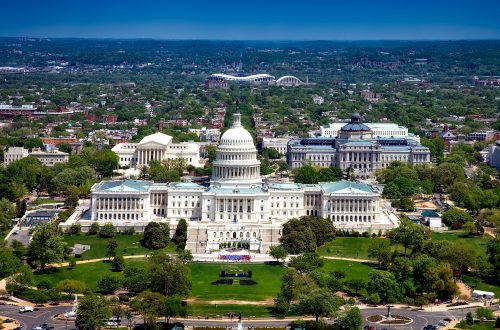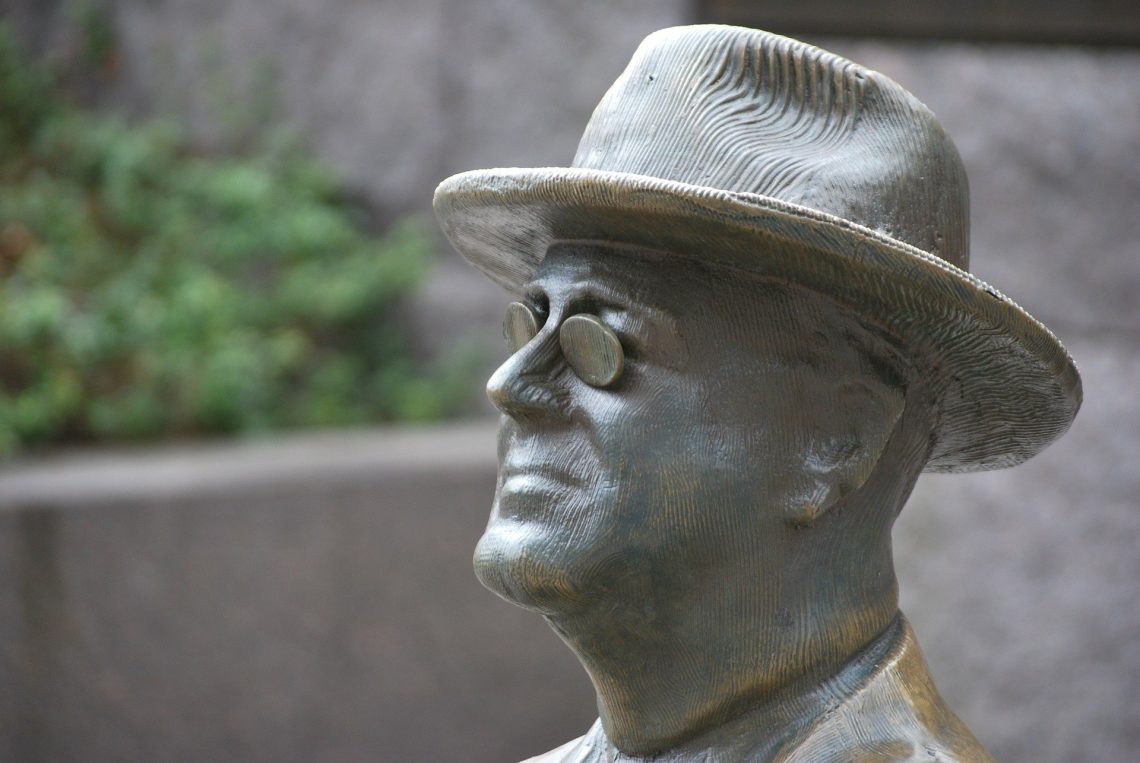
Hall of Presidents Part 3
This week I continued researching past presidents in our history. If you’ve missed the first two posts, you can read part one here and part two here. I’m really enjoying reading and writing about significant historical events! I hope you’re enjoying learning with me. I will be posting the final part of this series next week.
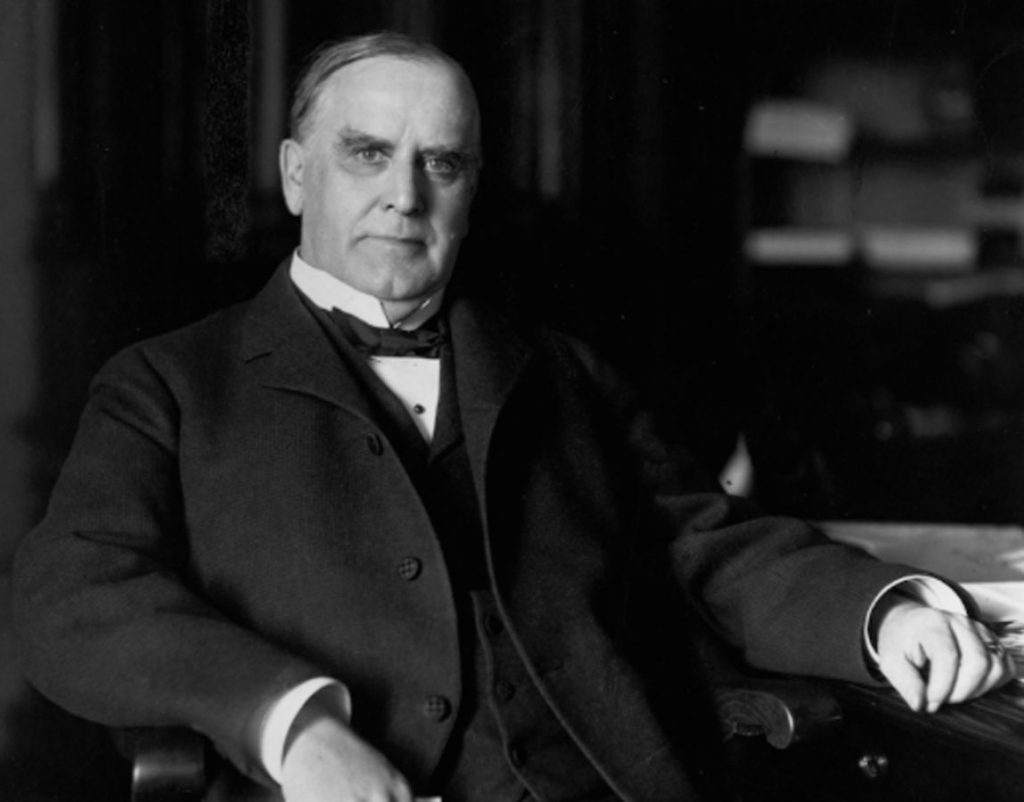
25. William McKinley
March 4, 1897- September 14, 1901
William McKinley was a teacher when the Civil War broke out. He enlisted as a private in the army. At the end of the war, he was discharged as a brevet major. McKinley studied law, opened a practice, and was elected to Congress by age 34.
McKinley was in the House for fourteen years and became the leading Republican expert on tariffs. In 1891, he became the governor of Ohio, where he served two terms. William McKinley was elected as president in 1896, and he took office in 1897.
As McKinley took office, the depression in 1893 had almost ended, leaving agitation over silver. William McKinley enacted the highest tariffs in history to help rebuild after the depression.
Foreign affairs were a big part of the administration. The public pressured the president to announce war on the Spanish as the Spanish forces and Cuba’s revolutionaries reached a stalemate. Reports stated high casualties and public pressure caused McKinley to announce neutral intervention, eventually leading to war. The Spanish-American War lasted 100 days.
Fun Fact: William McKinley was elected for a second term, but it ended abruptly when he was assassinated. He was shot in September 1901 and died 8 days later.

26. Theodore Roosevelt
September 14, 1901- March 3, 1909
Theodore Roosevelt was born to a wealthy family in New York City and suffered from poor health early on. His first wife and mother died on the same day, and he spent the next couple of years on his ranch in the Dakota Territory. He remarried in 1886.
During the Spanish-American War, Roosevelt was a lieutenant colonel. He led the Rough Rider Regiment in the battle of San Juan, which made him a war hero.
Theodore Roosevelt became the youngest president in U.S. history after the assassination of William McKinley. Roosevelt led Congress into making progressive reforms and a strong foreign policy. One of his biggest achievements was in conservation. He added to forests out west and worked on many irrigation projects.
Teddy Roosevelt felt that the president’s role was to “take whatever actions necessary unless expressly forbidden in law or the Constitution.” His youth was a big difference from the “log cabin” presidents. After finishing the second term of his presidency, he went on a safari. Then, he jumped back into politics, starting a new ticket for a progressive party. While campaigning in Milwaukee, he was shot in the chest. He survived the gunshot wound but died in 1919.
Fun Fact: Theodore Roosevelt ensured the construction of the Panama Canal and won a Nobel Peace Prize.
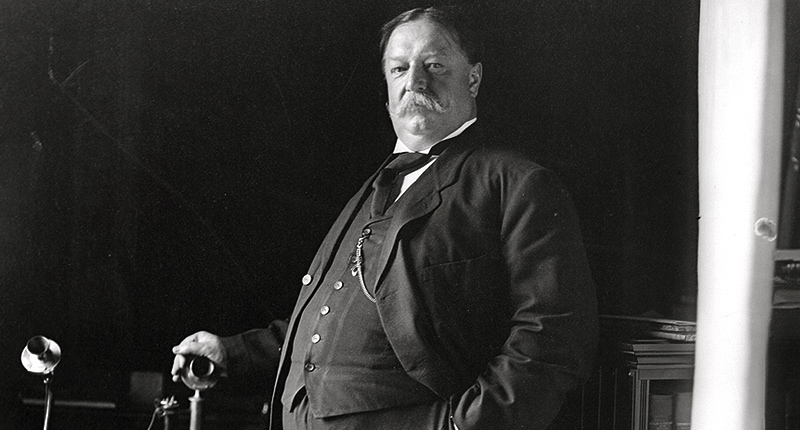
27. William H. Taft
March 4, 1909- March 3, 1913
William H. Taft graduated from Yale and returned to Cincinnati to practice law. He rose in politics through appointments from the Republican party. Taft wanted to become a Supreme Court member, but his wife had other aspirations for him.
President McKinley sent him to the Philippines as a chief civil administrator in 1900. He helped rebuild roads, repaired the economy, and allowed the people to play a role in the government. President Roosevelt made Taft secretary of war, and the party decided that he should be Roosevelt’s successor by 1907.
William Taft hated campaigning but was elected in 1908 as the next president. Unlike Roosevelt, Taft didn’t believe in stretching the powers of the presidency. Progressives were upset that Taft didn’t carry out plans laid by President Roosevelt. When Republicans nominated Taft for a second term, and Roosevelt ran on a new ticket, both were defeated by Woodrow Wilson.
President Taft served as a law professor at Yale until President Harding appointed him as Chief Justice of the Supreme Court–the position that he wanted all along. He held that role until he died in 1930.
Fun Fact: William H. Taft served as the 27th president of the United States of America and later served as Chief Justice. He is the only person to serve in both of these roles.

28. Woodrow Wilson
March 4, 1913- March 3, 1921
Woodrow Wilson graduated with his doctorate and began his career in academics. He was a conservative political science professor and became the president of Princeton in 1902. Democrats convinced him to run for governor of New Jersey in 1910, and he separated himself from the conservatives that endorsed him. He ran on a progressive platform that he pursued after being elected.
Wilson was nominated for president by the Democratic party in 1912, and he ran on a platform of state’s rights and individualism. He won the electoral college with a large margin.
While in office, Woodrow Wilson passed major pieces of legislation through Congress. The first one was legislation to lower tariffs, the second one was for more elastic money supply, and the third was to prohibit unfair business practices. Later, laws were passed prohibiting child labor and limiting railroad workers to eight hour days.
After reelection, Wilson decided that America could no longer stay neutral in the ongoing World War. He asked Congress to declare war on Germany. A year and a half later, Germany signed an Armistice.
Fun Fact: Woodrow Wilson made a national tour to gain the public’s support on the treaty that he was trying to pass to build peace. This was against his doctors’ warnings, and he suffered a stroke from exhaustion. He lived until 1924.

29. Warren G. Harding
March 4, 1921- August 2, 1923
Warren G. Harding started as a publisher of a newspaper in 1865. He was a director in several different businesses, a trusted member of the church, and a leader in charitable enterprises and fraternity groups. Harding even organized the Citizen’s Cornet Band, which was for both Republicans and Democrats.
Harding’s voice and ability to speak, along with the willingness to allow the Republican party to decide policies, allowed for him to go far in Ohio politics. He served as Lieutenant Governor and in the state Senate and attempted a run for office as Ohio’s Governor. He delivered the nomination speech for President Taft and was later elected into the Senate.
President Harding signed bills from the Republicans in Congress, and a lot got passed. The President got word that some of his friends in his administration were using their positions for their own gain. He didn’t get the chance to decide what he would do because he died of a heart attack.
Fun Fact: Warren Harding won the presidency with the biggest margin in the popular vote up to that point in history.
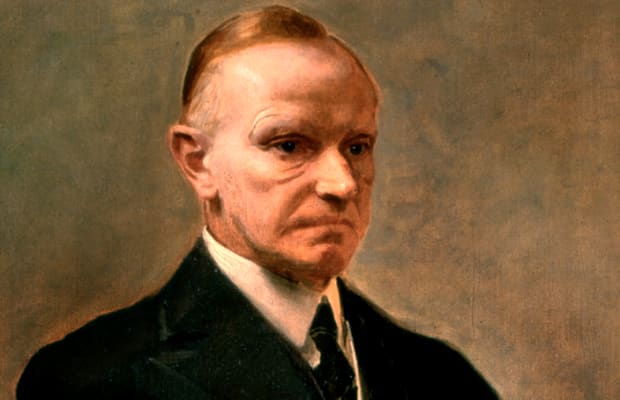
30. Calvin Coolidge
August 3, 1923- March 3, 1929
Calvin Coolidge began his life as a politician as a councilman in Massachusetts. He slowly climbed the political ladder from councilman to governor. He became president when the sitting president, President Harding, died of a heart attack in the middle of his term.
Coolidge was conservative and determined to preserve traditional ideas even with the new material world Americans enjoyed. The first message he sent to Congress called for limited support to farmers, tax cuts, and isolation foreign policy.
In the election of 1924, Coolidge stated that America had reached a “state of contentment seldom before seen” and ran on the idea that he would maintain it. He won with 54 percent of the popular vote and was wildly popular for his conservative views.
President Coolidge was known for saying as few words as possible but often allowed the media to take pictures of him. While in office, tragedy struck when his son died of blood poisoning. He had gotten a blister while playing tennis, but it got infected, and he passed away.
Fun Fact: Calvin Coolidge was first sworn into office by a family member in his family member’s parlor in the middle of the night when he found out that President Harding had died of a heart attack. Then he went back to bed.
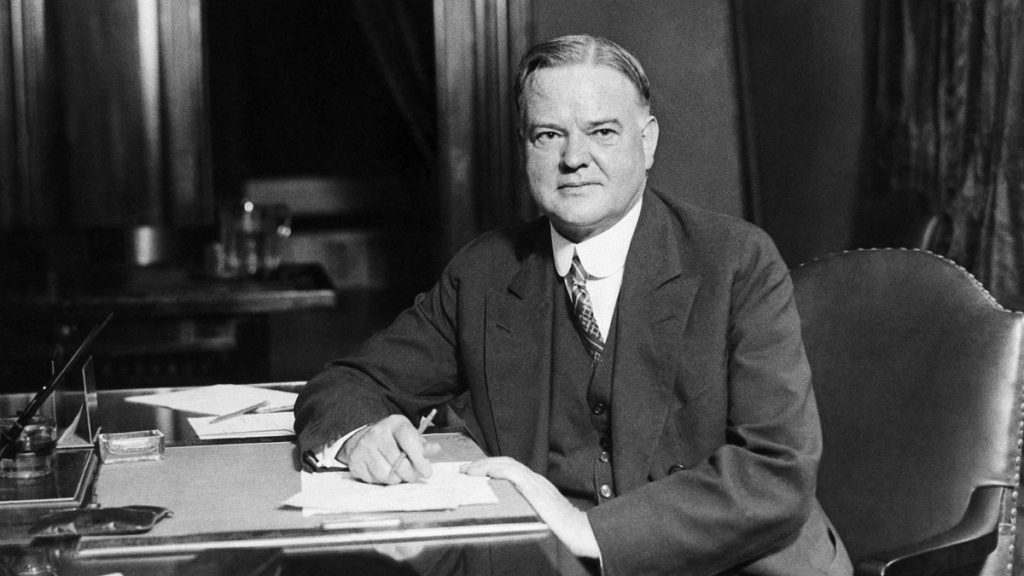
31. Herbert C. Hoover
March 4, 1929- March 3, 1933
Herbert Hoover traveled abroad and worked as an engineer and humanitarian overseas. A week before his 40th birthday, Germany declared war on France, and Hoover was contacted to help stranded tourists return home. After that, he assisted in Belgium. The German army had overrun Belgium, and many people were starving.
President Wilson appointed Herbert Hoover as head of the U.S. Food Administration after the United States entered World War I. He was able to keep the allies fed without needing to ration food at home, and he cut the consumption of food needed overseas. Hoover organized food shipments that would feed millions of starving people in central Europe after the war ended.
Hoover ran for election in 1928, but the stock market crashed within months of him taking office. The crash was the beginning of the depression. During the depression, Hoover attempted to balance the federal budget. Although Hoover thought people should not be hungry or cold, he believed that people should be supported locally by volunteers. He ran for reelection but took the fall for the depression and was badly defeated in the 1932 election.
Fun Fact: Herbert Hoover was raised in Oregon by his uncle after becoming an orphan at age 9.

32. Franklin D. Roosevelt
March 4, 1933- April 12, 1945
Franklin D. Roosevelt started his political career in the senate in 1910. He was appointed as assistant secretary of the navy in 1913 by President Wilson. He was the Democratic nominee for president in 1920. When he was 39, he became ill with poliomyelitis. He regained the limited use of his legs, mostly by swimming.
Roosevelt was elected as president in 1932 and was president for four terms. With millions of unemployed and several banks closed, Roosevelt had an ambitious plan for his first 100 days. The plan included relief for businesses and agriculture and support for the unemployed.
During his presidency, Roosevelt created Social Security, raised taxes for the wealthy, created work relief, and assisted in giving support to nations in Europe being attacked by Germany. After the Japanese bombed Pearl Harbor, Roosevelt used what he learned from World War I to help plan for entering World War II.
Fun Fact: Franklin D. Roosevelt was the only president to serve for more than 2 terms. He died a year into his fourth term. Also, his wife, Eleanor, was his distant cousin.

33. Harry S. Truman
April 12, 1945- January 20, 1953
Harry S. Truman was a farmer for twelve years before joining World War I as a captain in the Field Artillery. He opened a haberdashery with his wife, and when it failed, he got elected as a judge in the Jackson County Court. After that, he was elected as a senator. During World War II, Truman was the head of the Senate War Investigating Committee, where the committee looked for waste and corruption, saving billions of dollars.
Truman became Vice President to Franklin D. Roosevelt in 1944. He became president after Roosevelt died in the middle of his term. With the war continuing, Roosevelt assumed responsibility for ending it. After a plea for Japan to surrender was rejected, Truman ordered two atomic bombs to be dropped on Hiroshima and Nagasaki. He later won the election for his first full term. After almost two full terms in office, Truman decided not to run for reelection.
Fun Fact: President Roosevelt kept Truman in the dark about war matters while Truman was Vice President. This made for a difficult transition when Roosevelt died, and Truman became President.
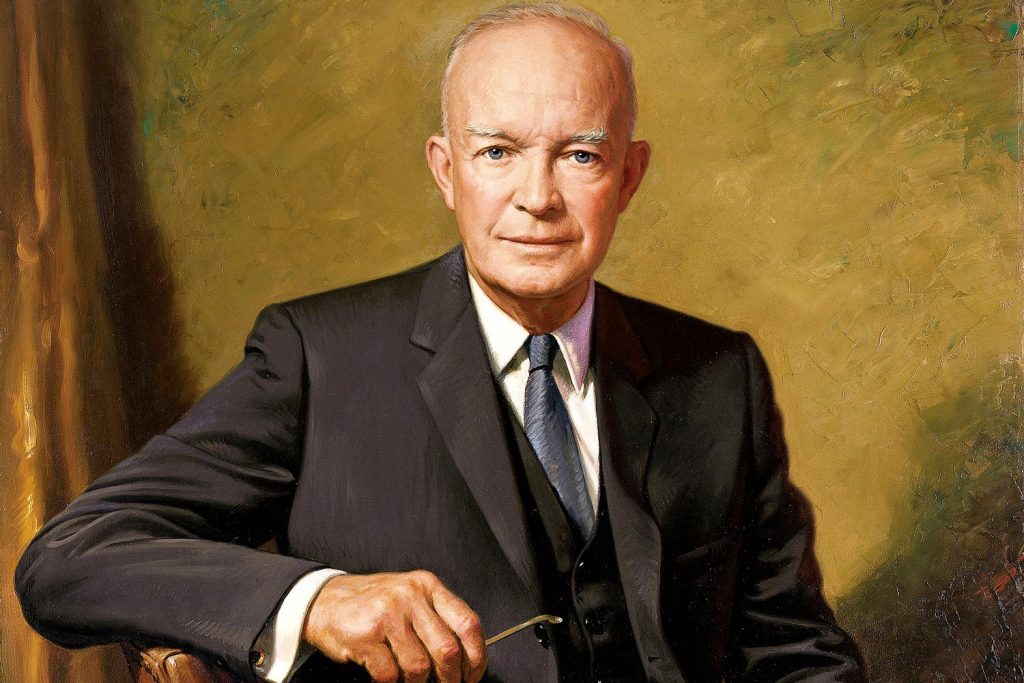
34. Dwight D. Eisenhower
January 20, 1953- January 20, 1961
Dwight D. Eisenhower started his career with the military and excelled with staff assignments. After Pearl Harbor, he was called to Washington to work on war plans. When troops invaded France on D-Day, Eisenhower was supreme commander.
After the war, Eisenhower became president of Columbia University. He took leave when he became supreme commander over NATO forces and was persuaded to run for president in 1952. He won with a big margin.
While President Eisenhower attempted to reduce tensions of the Cold War, secured the border between North Korea and South Korea, and supported schools’ desegregation. Eisenhower suffered a heart attack during his first term but won a second term after he recovered.
Fun Fact: Eisenhower banished the squirrels at the White House because they were ruining his putting green.
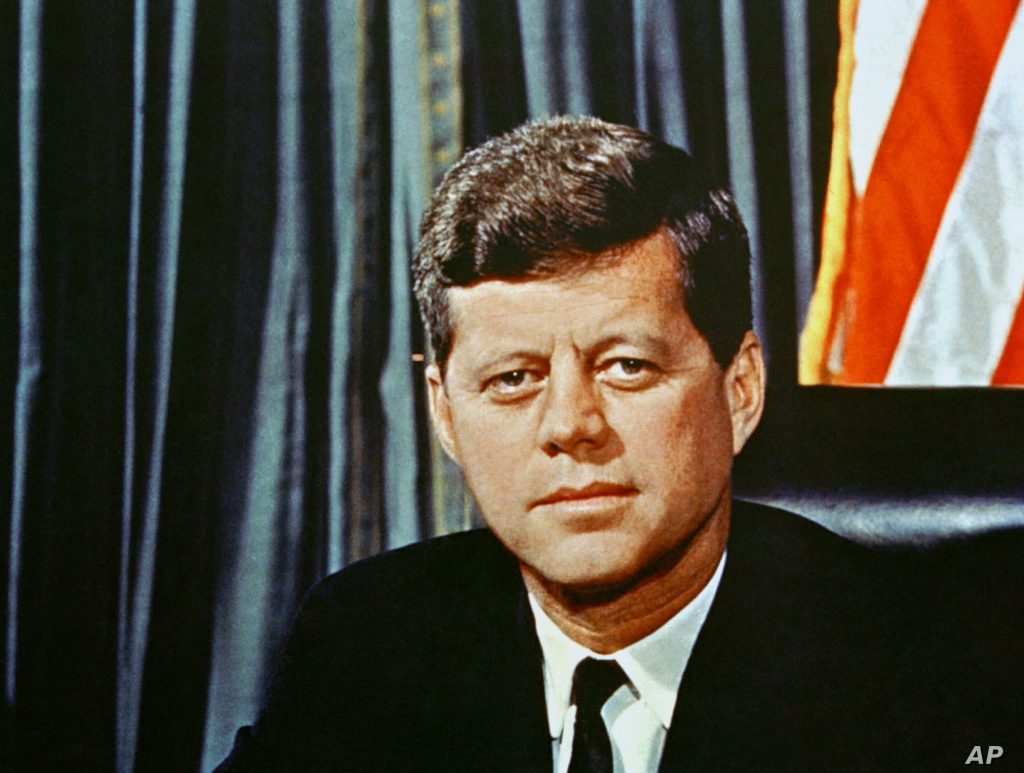
35. John F. Kennedy
January 20, 1961- November 22, 1963
John F. Kennedy was in the Navy during World War II. When a Japanese destroyer hit his boat, Kennedy led the survivors to safety while injured. He became a congressman after the war and advanced to the Senate. He wrote Profiles in Courage and won the Pulitzer Prize for history.
Kennedy became Vice President, and four years later, became the Democratic nominee for President. He beat Nixon in the 1960 election with a narrow margin and became the first Roman Catholic President. In 1963, he called for a plan to desegregate hotels, restaurants, and other public businesses.
Kennedy worked to improve the United States’ overall culture and show the importance of the arts in society. He worked to preserve human rights and aid developing nations. In November, Kennedy was assassinated.
Fun Fact: Kennedy was rich, so he donated his congressional and presidential salaries to charities. He was the richest man to become President at the time.

36. Lyndon B. Johnson
November 22, 1963- January 20, 1969
In 1937, Lyndon B. Johnson successfully campaigned for the House of Representatives. He served as a lieutenant commander in the Navy during World War II and won a Silver Star in the South Pacific. He was elected to the Senate after six terms in the House of Representatives. Johnson became Senate minority leader in 1953 and then became majority leader in 1955 when Democrats won control.
Johnson was President Kennedy’s Vice President and became President on November 22, 1963, when Kennedy was assassinated. He worked to enact bills that Kennedy had been working on–a tax cut and a civil rights bill. In 1964, he won the election for his first full term as President.
Johnson enacted federal aid for education, created Medicare, advocated for conservation efforts, signed the Voting Rights Act, removed legal obstacles that kept African Americans from voting, made progress with the space exploration program, and worked to initiate formal negotiations with Vietnam to end the Vietnam War.
Fun Fact: Lyndon B. Johnson started his career as a teacher before campaigning for the House of Representatives.
Learn More
Stay tuned for the last group of presidents! Until then, here are the sources that I’ve been using through all of these posts: White House Timeline and The White House. Happy learning!





